Shio koji is a salty condiment related to miso, tamari, and soy sauce. Here’s how to make this naturally gluten-free liquid aminos!
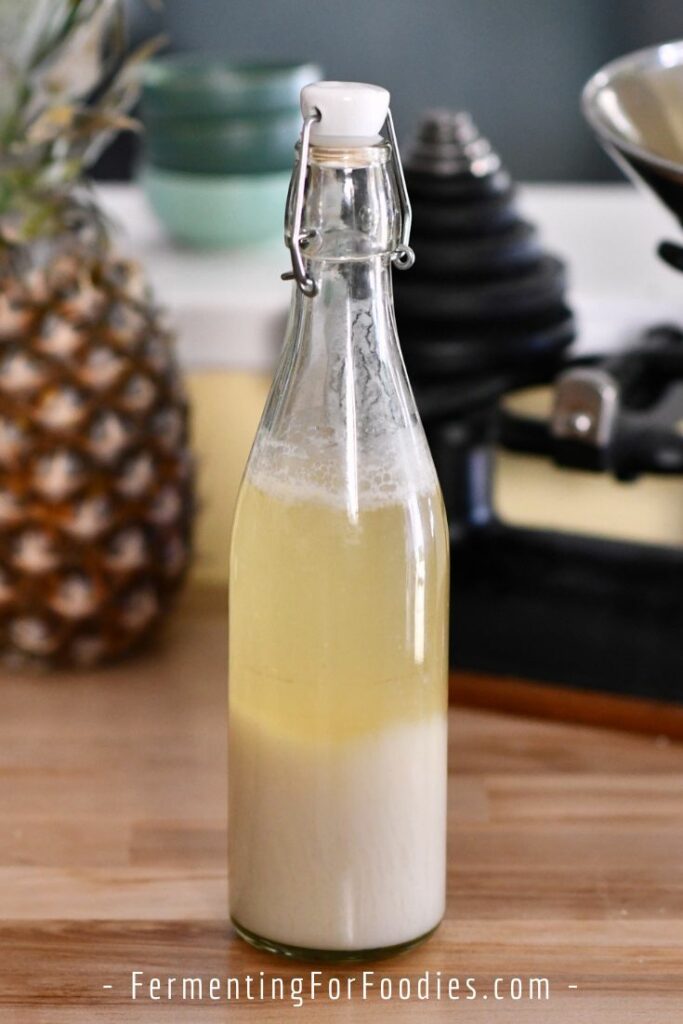
I’ve thought about making tamari or a wheat-free soy sauce several times. However, every time I look into it, I decide it’s too much work. I like fermenting, but I’m not into fermenting something that needs daily attention and stirring. 😉
Shio koji is my happy alternative. It’s a quick ferment that is SOO simple. It’s a perfect zero-waste option for liquid aminios!
Even if you’re new to fermenting, this recipe is for you. It is that easy.
How to use shio koji
All koji-based ferments are perfect for bringing umami to your meals.
Shio koji has two forms:
- A thick paste that includes the fermented rice.
- Strained liquid amino acids.
Thick paste
The thick paste that includes the blended rice has a chalky texture that makes it better for coating and culturing other ferments rather than adding it to dishes.
- The traditional way to use shio koji is to marinate meat. This is because it is packed with enzymes that help break down proteins. It doesn’t only flavor meat, but softens it as well (I’m mostly vegetarian… so I’m taking this info from one of my favorite fellow fermenters, Holly Davis).
- It can also be used as a culture for other ferments. Any recipe that calls for miso paste can be fermented with shio koji. I particularly recommend using it to ferment tofu. The resulting tofu spread is a flavorful vegan condiment.
- Whatever you do, don’t throw out the rice! Here are some easy ways to use this nutrient-packed product:
- Add it to smoothies (though only in small amounts as it is quite salty).
- Make pickled vegetables.
- Use it to flavor soups and stews (as described in the liquid aminos section below).
Strained liquid amino acids
Traditionally, shio koji is always used as a thick paste. However, I really wanted a gluten-free, zero-waste alternative to my usual soy sauce. This liquid amino sauce isn’t the same as soy or tamari… it has a sweeter flavor and lacks the earthiness of soy sauce. Regardless, it’s a pretty good substitute for anyone wanting to avoid the cost of buying gluten-free soy sauce.
- Strained liquid amino acids can replace salt in a dish. If you followed my recipe below, then you can use double the amount of liquid aminos. For example, 1 tsp of salt can be replaced with 2 tsp of shio koji.
- Add it to soups and stews as a bouillon replacement. It adds a ton of flavor and salt.
- Guacamole really benefits from the addition of this amino sauce. Fermenting guacamole not only helps it last longer, it also stops it from going brown!
How to know when your shio koji is ready?
I’ll admit, fermentation is a bit of an art form. Deciding when to bottle your cider or serve your pickled vegetables, depends on the Flavor, Texture, and Smell.
Shio koji is exactly the same… As a mold-based ferment, it will ferment fast in warm weather and slow down in cooler weather.
The best way to know when it is done is by the flavor.
- Start to taste it after 7 days of fermenting. Since you have to stir it every day, simply lick the spoon when you are done.
- At first, it will just taste salty… so salty you won’t really enjoy it.
- As it ferments the flavor will become richer and sweeter. It’s ready when you lick the spoon and don’t just taste salt but rather a sweet and rich flavor.
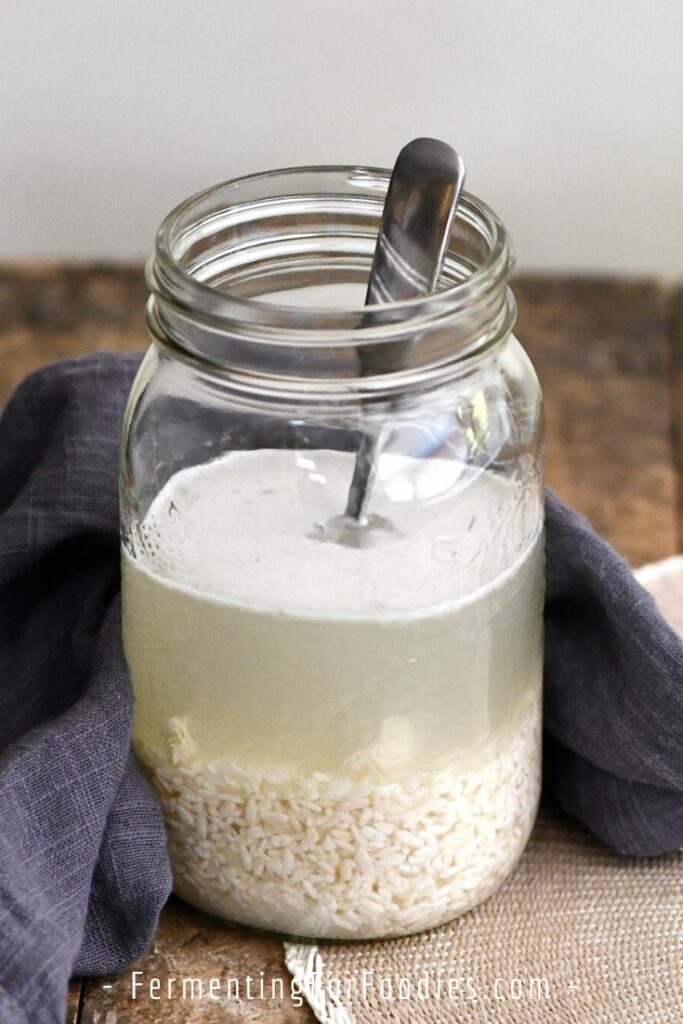
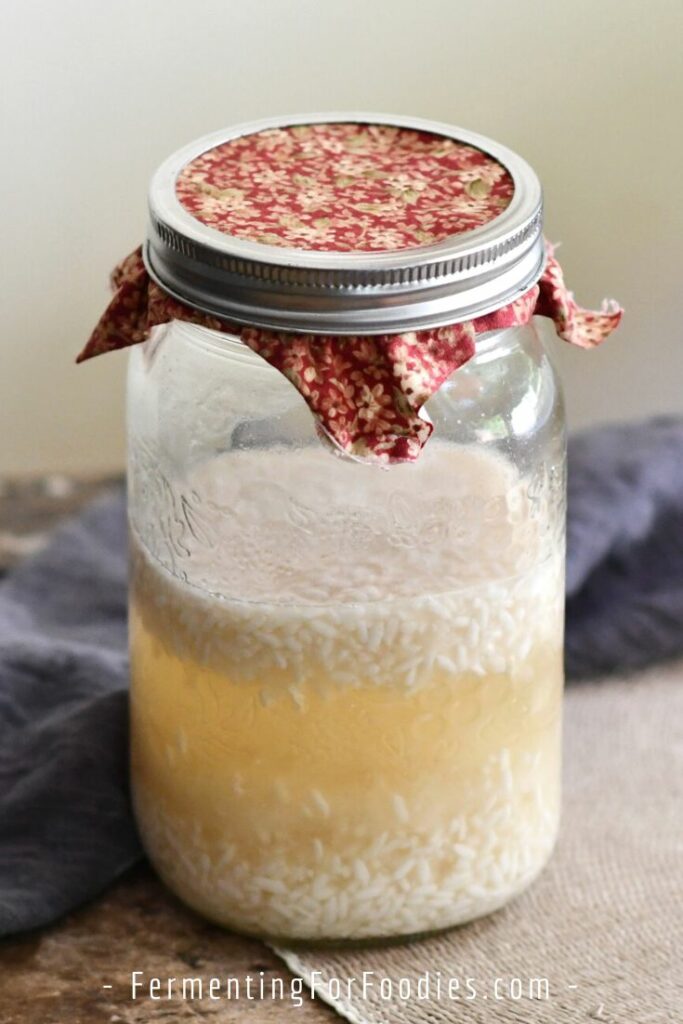
Shio Koji: A Japanese Amino Sauce
Shio koji is a salty condiment related to miso, tamari, and soy sauce. Here’s how to make this naturally gluten-free liquid aminos!
- Prep Time: 5 minutes
- Total Time: 5 minutes
- Yield: 2 1/2 cups 1x
- Category: Sauce
- Method: Fermented
- Cuisine: Japanese
- Diet: Gluten Free
Ingredients
- 2 cups of water (chlorine-free)
- 1 cup of koji rice
- 3 Tbsp salt (non-iodized)
Instructions
- There are a few variations on this simple fermented sauce, however, they usually involve the same three ingredients. It’s the proportions of salt/water/koji that vary. I’ve chosen to go with a happy medium, however, feel free to increase the water up to 3 cups for a less salty sauce or decrease it to 1 cup for a saltier sauce. If you’re looking to make a soy sauce replacement, you’ll want to use less water. I realize this seems backward, but soy sauce is an intensely rich and salty sauce. Using less water will provide a better substitute.
- Combine the water, koji, and salt in a glass jar. Mix everything well to break up any clumps of koji rice.
- Cover the jar with a cloth or a coffee filter held in place with a rubber band. Leave it to ferment at room temperature for 7 to 14 days. Stir once a day to aerate it (koji needs oxygen). After 7 days, lick the spoon after stirring to see how it tastes. The shio koji is ready when it starts to taste sweet and savory. (See the section above for details).
- Once it has finished fermenting, you can either strain out the rice or purée the mixture in a blender. Even if you strain out the rice, I recommend keeping it for other culinary uses. See the section above for details.
- Store the finished shio koji in an air-tight jar in the fridge. Shio koji will last in the fridge for up to 1 year.
Notes
- I do a LOT of fermenting… at any given time I have milk kefir, sourdough, and a fermented beverage. (At the time of writing this, I have both tepache and kombucha going.) So my shio koji always catches a bit of wild yeast too. The wild yeast causes it to carbonate slightly. This is perfectly fine. The yeast will slow down once the shio koji is stored in the fridge.
- It’s also fine to store shio koji at room temperature in a dark location (like the cupboard you store your vinegar and oils in). However, I recommend on using it up within 1 month when stored at room temperature.
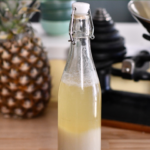
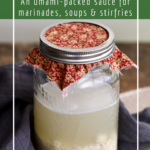

Leave a Reply